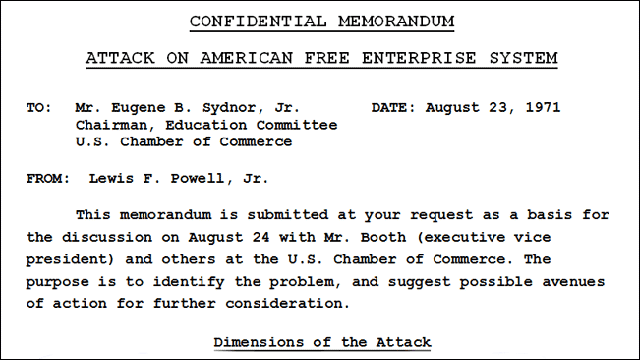Democracy is on life support in the U.S. This didn’t just happen overnight. One of the original daggers in its side is the 1971 Powell Memo, which outlined a comprehensive strategy for building institutions to promote free market worship and limit participatory democracy.
Tag: strategy
A Minority President
George Lakoff is a linguistics professor and my favorite explainer of political values and communication strategy. Last week he wrote a great summary of where we are now.
Read: A Minority President: Why the Polls Failed, And What the Majority Can Do
Reality check for grassroots organizers
It’s so obvious, but nobody does it. We say we’re working for “The People” (or poor people, or immigrants, or women, or African Americans, or whoever) but do we really accept their leadership? Do we even listen to the voices we think we are empowering?
Zack Exley’s manifesto “An Organizer’s Guide to Trusting the People” lays out a network-centric approach if I ever heard one.
Those and other experiences like them gradually woke me up. I started approaching groups of workers with the assumption that they were, taken as a whole, savvy and strategic, not apolitical and apathetic. That opened the door to all kinds of great collaborations. I started assuming these groups of people were strong, deep, strategic and concerned — “even if they were” made up of Evangelical Christians, survivalists, muscle car drivers, trailer park dwellers, pit bull breeders, and anything else my Northeastern Liberal upbringing had taught me to ridicule.
– An Organizer’s Guide to Trusting the People
To me this isn’t just something that it helps to think about when organizing or to try to believe, it’s something that I must believe to be an activist and organizer. In fact, it’s fundamental to the whole idea of network-centric advocacy. The People = The Network. They collectively are the leaders, our job as organizers is create tools and infrastructure that allows them to do their thang.

